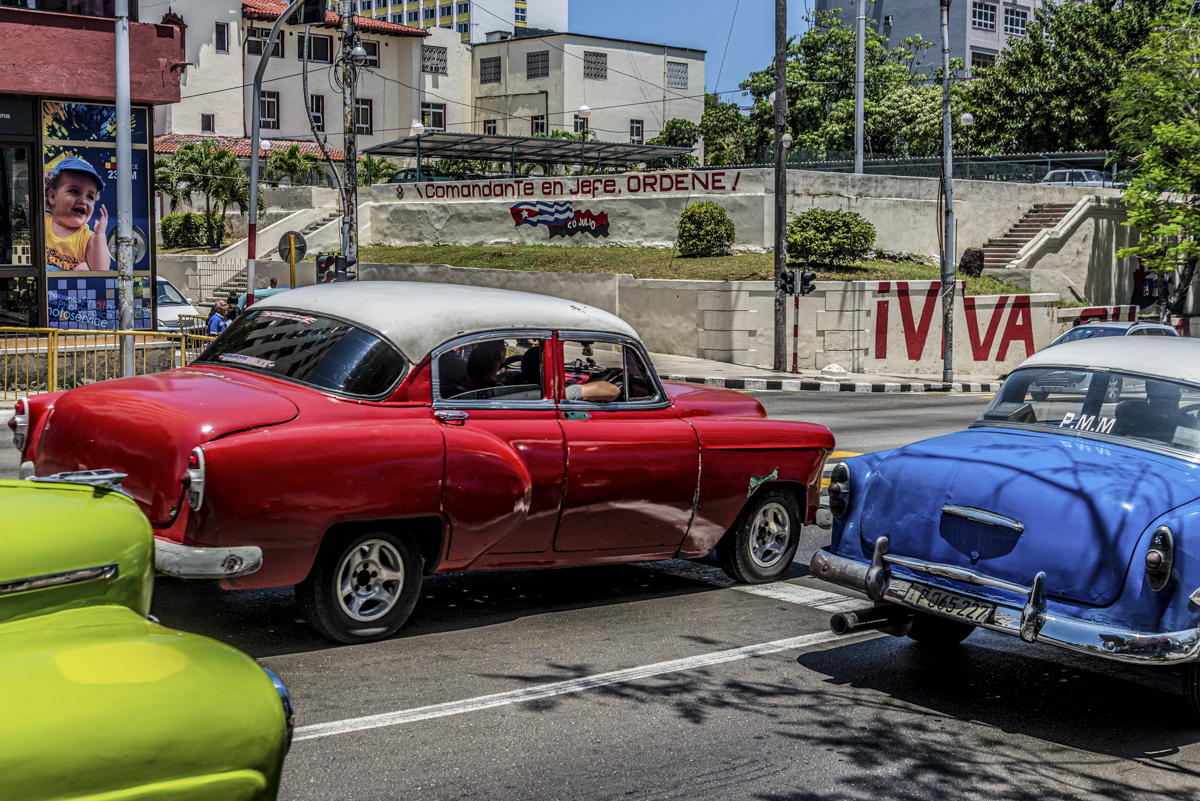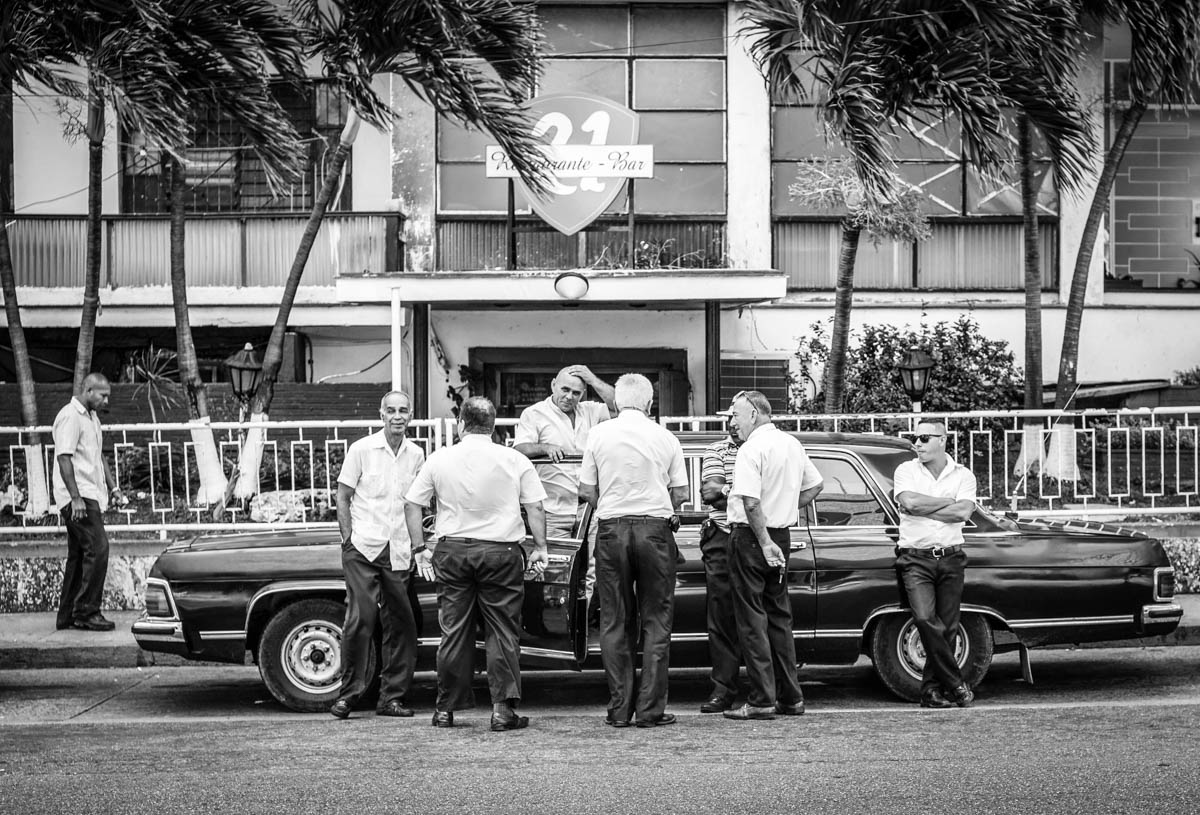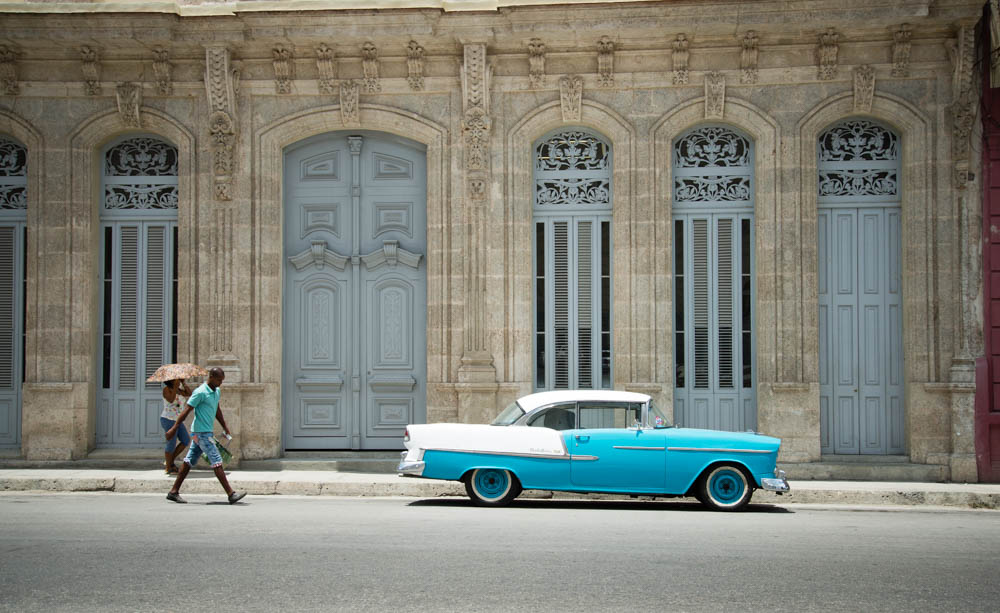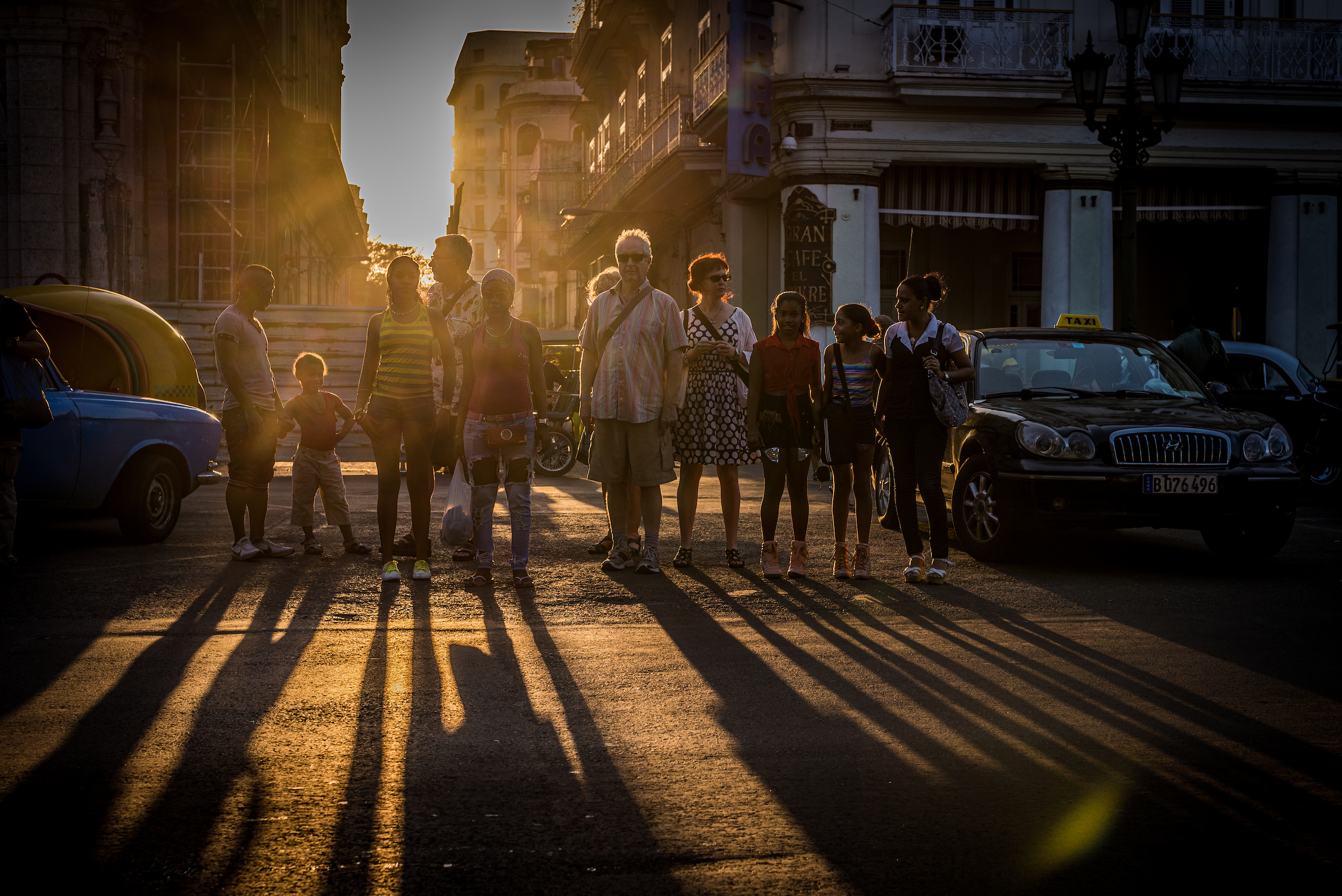Unique is truly the only word to describe a Cuba photography trip. The history, architecture, street scenes, and people there are like nowhere else in the world. And, there is no better way to take in this Latin American anomaly than with our Cuba photo tour.
With its distinctive culture, Cuba has so much for a photographer to explore. Only opened to tourists in the last decade after half a century of political isolation, the country has a culture, aesthetic, and vibrancy that is entirely its own. From smoky low lit jazz bars to cacophonous cafe’s to the cobblestoned side streets they spill on to, Cuba is a country where your creativity with a camera can run rampant.
In this article, we’ll explain what makes a Cuba photography workshop so unique, offer some tips for photography travel, and we’ll share some words from one of the photography guides of our trip, Andrew Bell, on why you should join us to explore Cuba this year.
Why is a Cuba Photo Tour So Unique?
Cuba is a country of impossible contrasts and an absolute gift for a keen photographer. Paradoxically frozen in time yet pulsating with life, pastel-shaded and dilapidated, the streets of Cuba hold both a perfectly preserved history and a vibrant, vital, creative youth scene. This gives the country a distinctive aesthetic charm, but moreover a sense that this is a time and place worth witnessing and documenting with a camera.

Credit (Andy Scaysbrook)
Here’s What to Expect From a Cuba Photo Tour
1. Timeless Beauty
Although the consequence of its tumultuous past, one of Cuba’s greatest allures lies in its ability to transport visitors to a bygone era. With vintage cars and half-colonial, half-communist architecture, the island feels like a time capsule from a period when the pervasive presence of globalization couldn’t be felt.
2. Colorful Streets
From the faded pastels of Havana’s promenades to the bold hues of Trinidad’s cobblestone streets, the vibrant color palette of Cuba is a street photographer’s fantasy. With colorful murals, classic cars, and bustling markets, every corner bursts with life and energy.
3. Rich Culture
Beyond the picturesque facades lies a passionately celebrated culture steeped in proud tradition and historical poignance. Picture town squares where salsa, son, bolero, and jazz play every night and in the day the aroma of freshly brewed Cuban coffee mingles with the scent of cigar smoke.
4. Historical Significance
Many define Cuba’s historical significance purely by its separation with the United States, but this barely scratches the surface. Every cornershop, back alley, and town square of Cuba tells its own story of a proud legacy of political and cultural movements that have shaped the island’s identity.

Credit (Andy Scaysbrook)
Insights From Our Photography Guide
Andrew Bell is a seasoned photographer with over four decades of experience capturing the essence of people and places. Earlier this month, we caught up with Andrew and asked him to share his thoughts on why our Cuba photography trip a great experience. Here’s what he had to say:
1. What Makes Cuba a Good Destination for a Photography Tour?
“In Cuba there’s an energy, a sense of wonder and mystery and the feeling that adventure awaits around every corner. With each passing hour everything changes, the light and shadows, the people, the colors; you can stay in the same place all day and not take the same picture twice.
Each time we visit, something is different to the last, new buildings open, restaurants, bars, yet it’s always the same Cuba; the people are still smiling, no matter the hardships, they’re still warm, welcoming and eager to talk, or pose for the camera. That mix of architecture that you find almost nowhere else in the world is mesmerizing too. Colonial masterpieces, next to communist era blocks, behind modern glass fronted hotels.
There’s nowhere you can go where there isn’t another photograph to be found, a different angle to look at things from or something that catches the eye and draws you in. Then there’s the bars and nightlife, the singing and dancing… Nothing compares to a photo tour in Cuba.”
2. What Photo Opportunities Can People Expect During Our Cuba Photo Tour?
“Everything from people to landscapes and cityscapes to architecture and agriculture. In Havana, the bustling streets are full of people of all walks of life who will rarely shy away from a camera; musicians and street performers alongside market stalls, all with the backdrop of colorful buildings. The malecon runs alongside the seafront, giving spectacular views to the horizon. At night it comes alive with vendors, groups of people talking, meeting, singing, dancing, listening to music.
In Santa Clara, life is less busy than Havana, there we’ll find even more history, arts and culture. When we arrive in Trinidad it will be like stepping back in time; cowboys on horseback on cobbled streets, low buildings of every color and hue, sunsets and sunrises that transform the town once again.”
3. Are There Any Particular Highlights From Your Travels in Cuba?
“Every Cuba photography trip yields a new highlight, from the first time capturing the sunset over the Caribbean Sea to unexpected encounters with a multitude of people from all around the world. Visits to the National Ballet, finding a nightclub hidden in a series of caves, swimming in a lake in a national forest… Each time we visit, something surprising and unexpected happens.”
4. Who Should Join?
“Anyone! It doesn’t matter if you’re just picking up a camera for the first time, if you shoot on your phone, or if you have years of experience, everybody who’s joined a Cuba photo tour has been inspired by what they see and experience and everyone has come away having learned something new.”

Credit (Andy Scaysbrook)
Tips for Cuba Photography Travel
There are a lot of great options when choosing the best destination for photography travel, but you have to admit that Cuba makes a persuasive case. If you’re starting to feel convinced and have your eye set on a Cuba photo tour, then you might like to know our top tips for Cuba photography travel.
1. What to Look For in a Cuba Photo Workshop?
When choosing a Cuba Photo Workshop, prioritize the guidance and photography development offered. You shouldn’t just go home with a stack of incredible images, but with new skills and confidence in your abilities with a camera too.
Seek guides who are knowledgeable about the country but, critically, who are skilled and experienced photographers too. Look for workshops that offer a balance of structured shoots and free exploration, and don’t forget to consider the group size as smaller groups often allow for more personalized instruction.
2. When to Plan a Cuba Photography Trip?
Cuba’s tropical climate and equatorial position means that it enjoys warm, sunny, long days year-round. So, regardless of when you visit you’ll have great photography conditions.
In our opinion, the best time for a Cuba photography workshop is during the dry season from November to April. Unsurprisingly, this is when we’ve scheduled our 2024 Cuba photography tour, at the start of the dry season in November, while plant life is still lush and green but the skies are clear.
3. What Are the Must-See Sights for a Cuba Photography Trip?
From the bustling streets of Havana to the serene landscapes of Viñales, Cuba is brimming with iconic sights waiting to be captured. There’s also the beautiful Trinidad, where you can explore the charming colonial streets and pastel-colored houses of this UNESCO World Heritage Site, or Santa Clara’s amazing artistic scene.

Credit (Andy Scaysbrook)
Your Cuba Photo Tour Awaits!
Now, you have an idea of what makes a Cuba photography workshop so special. Armed with this knowledge, you’re ready to start planning your own Cuba photography trip. Cuba beckons to be explored through the lens of a camera. Get in touch to learn more about our upcoming Cuba photo and secure your spot on this journey of discovery.




